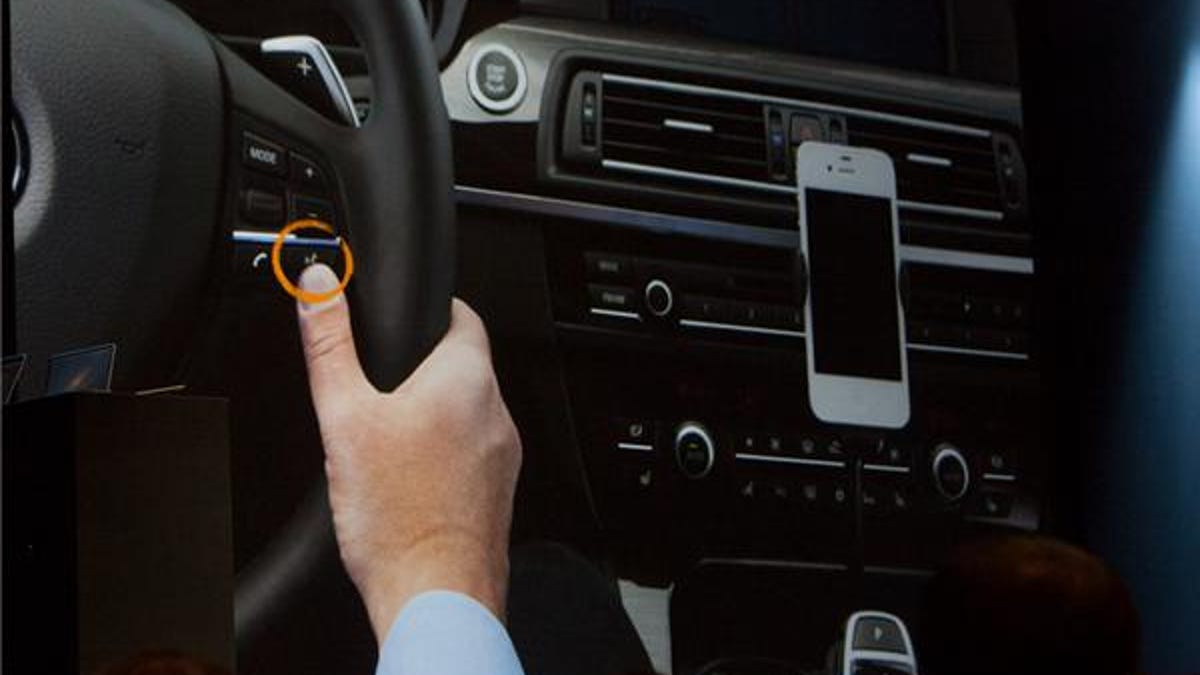What Siri's 'Eyes Free' feature means for cars
Car makers and Apple are working together to bring natural language telematics to vehicles, but could this be too much of a good thing?

One of the newest Siri features isn't for the iPhone, but for vehicles that will integrate this natural language voice command service.
Apple announced today at its annual developer's conference, WWDC 2012, that several automakers have signed on to implement Siri's "Eyes Free" feature in their vehicles. BMW, General Motors, Toyota, Mercedes-Benz, Honda, and Audi will enable drivers to integrate Siri with their vehicle's electronics system, and access the mobile assistant using a steering wheel button.
From the photo shown during the keynote address, it appears Siri--or Siri-like technology--could get its own button on some models. Vehicle steering wheel control buttons vary from car to car, but many include Bluetooth controls for answering phone calls, disconnecting calls, and activating in-vehicle voice command systems.
The new button should be a welcome change for drivers who are used to manually entering their destinations into a GPS, or laboring through complicated voice-activated menu trees to perform simple tasks, like changing the radio station or placing a phone call. By leveraging Siri's natural language voice control platform, theoretically drivers will be able to keep their hands on the wheel and their eyes on the road to minimize distracted driving.
It is not clear what, if any, limitations will be set on Siri in the car when this feature debuts. Using the iPhone 4S, you can ask Siri to read and send text messages, get directions, find restaurants, play music, get the weather, and answer general trivia, a much broader functionality set than that found in most vehicle infotainment systems. But Siri will soon be able to launch iPhone apps, which will open the door to social media and entertainment distractions.
The wide range of capabilities that Siri can access could become a liability, and mean more distraction in cars, and less attention to the road. Will automakers be able to limit Siri to navigation, vehicle, and driving assistance? Or will Apple insist on full, unlimited functionality?
On the other hand, this news could also be interpreted as a sign that auto manufacturers are working closely with handset manufacturers to tackle distracted driving head-on. Last week, U.S. Transportation Secretary Ray LaHood issued what he called a blueprint for ending distracted driving. In the document, LaHood challenged the auto industry to come up with guidelines for reducing distracting devices use in cars. However, handset manufacturers were let off the hook.
The solution to curbing mobile device use in the car is not something that car makers can craft on their own. But if vehicles and smartphones standardize electronics systems technology, manufacturers on both sides of the equation will have the necessary tools to work together to figure out how to minimize distracted driving.
While this news is great for iPhone 4S users, Android and Windows phone users aren't entirely left out of the equation -- Siri-like voice command could be coming to all cars. Nuance, which provides the technology powering Siri, is also working with auto manufacturers to integrate similar natural language voice-activated telematics in vehicles. The company released its handset-neutral Dragon Drive product last month. Although the company won't comment on which manufacturers have opted to integrate this platform in their new models, consumers should begin seeing Dragon Drive offered in vehicles starting this summer.

